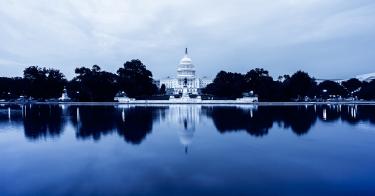Talk about great timing! Just as the Trump administration finalizes its plan to leverage $200 billion in federal funds into an infrastructure program worth $1 trillion, members of Congress are talking about reviving earmarks. That notorious practice has been under a congressional moratorium since 2011.
Lawmakers use earmarks to divert federal funds to specific pet projects in their states or districts. Former Sen. Tom Coburn called earmarks “the gateway drug to runaway spending bills.” At the time they were banned, they had become a mainstay of cronyism and political logrolling.
The “Bridge to Nowhere” is the most well-known example. But earmarking is why Michiganians can take the John D. Dingell Drive to Detroit’s airport, or why federal taxpayers handed out hundreds of thousands of dollars to Corktown area businesses they’ll never patronize after the city nixed a stadium project for which then-Sen. Carl Levin, D-Mich., had earmarked $3.8 million.
Congressional wheeler-dealers use earmarks to “buy-off” members in return for their support of problematic bills. For example, when Democratic leaders were trying to secure the votes to pass Obamacare, Sen. Levin landed an earmark that exempted nonprofit insurers in Michigan from paying hefty excise taxes under the new law. Similar insurers in 48 other states were not so lucky and have to pony up.
With $200 billion in federal funds to toss around under Trump’s infrastructure plan and a political need to rally a fractured Congress around the proposal, it’s easy to see why the president and congressional leaders are considering giving members the ability to set aside funds for projects of dubious value. After all, they’re great for generating ribbon-cutting photo-ops back in the district.
But it’s worthwhile to consider why earmarks were banned in the first place. While the Constitution wisely vests spending decisions in the legislative branch, history shows that this practice can get out of control when there is no effective check on total spending.
Amid the spending frenzy in the aughts (before Congress enacted spending caps in 2011), earmarking flourished. According to the Congressional Research Service, the total value of earmarked funds increased from about $35 billion for 6,000 earmarks in 2000 to over $72 billion for nearly 16,000 earmarks in 2006.The practice became so evidently wasteful and politically fraught that Congress banned the practice in 2011.
But the moratorium did not eliminate earmark-like spending. Instead, pork-barrel spending took the form of competitive grant programs in the executive branch, whereby powerful members of Congress contact agency officials to steer spending toward their desired projects.
Such spending requires local governments to chip in for project costs, thus diverting local resources towards politically prized projects and away from more boring but worthy endeavors such as basic maintenance. While distributing funds via formula can insulate outlays against direct congressional interference, this method suffers a lack of transparency and is subject to gaming by recipients.
The bottom line is: Be it via earmarking or grant-steering, Washington does a remarkably bad job addressing local needs. This is why states and localities should bear the primary responsibility for funding infrastructure projects through local means.
There are many negatives associated with increased federal spending for local infrastructure. It always comes with strings attached: federal regulations that needlessly drive up project costs. “Free” federal money also creates perverse spending incentives for states and localities too. And non-essential spending is especially unwise, given the increasingly dim federal fiscal scenario.
The most efficient and accountable method to invest in infrastructure is to free states from Washington diktats — including draconian permitting and environmental review processes. Far better to let states invest in their own infrastructure priorities, without federal interference
Michigan has suffered through enough political boondoggles already. (Think People Mover and AutoWorld.) There’s no need to give politicians even more opportunities to squander taxpayer money through earmarks. Instead, let’s get the federal government out of the way, and let the folks back home prioritize how best to allocate resources to modernize the state’s infrastructure.
This piece originally appeared in The Detroit News



